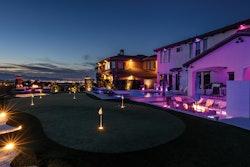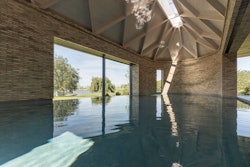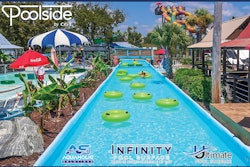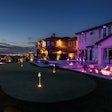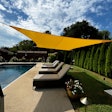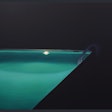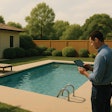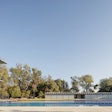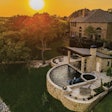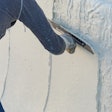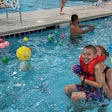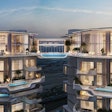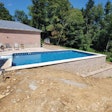
The unprecedented EPA Clean Power Plan emission standards of 2016 caused a number of coal-fired plants to switch to natural gas.
As an unintended consequence of this change, fly ash, a powdery byproduct of burning coal in thermal power plants and the main pozzolan used to prevent ASR (Alkali Silica Reaction) in concrete, disappeared from the market. Prior to 2016, fly ash was almost given away as a waste product. Once fly ash became scarce, some distributors omitted it from their mixture with customers unaware of the change.
This small, unnoticed alteration in concrete mix — which eliminated an ASR preventative — combined with the reactive aggregate in Central Texas to produce the now well-known ASR outbreak in the area.
ASR gel is formed by the reaction of silica dioxide in the abundant chert rock with the alkali metals in cement when moisture is present. It only takes about 80% relative humidity to sustain the reaction and since plaster is not a perfect moisture membrane, sufficient moisture to support the ASR reaction is often available in pool walls.
ASR formation generally takes about two to four years to develop in Central Texas. With the absence of fly ash starting in about 2016-2017, cracks started to show up in swimming pool shells around 2019-2020. The first cracks were treated as typical crack repairs, but soon, builders could not keep up with new crack formations. By mid-to-late 2020, testing indicated ASR presence, but by that time, there was a construction backlog of four to five years before people became aware of the true problem.
While Central Texas is the current hotspot, ASR is not limited to just
this region; there are reported cases in Dallas/Ft. Worth, San Antonio, and even a few in Houston. There are also a significant number of cases along the East Coast, in the Washington, D.C., and North Virginia area, in parts of New England, the Southeast, the Midwest, the Southwest, and along the West Coast.
QUESTIONS AND ANSWERS
The Pool & Hot Tub Alliance (PHTA) ASR Task Force has recently published two ASR FAQ sheets, one directed at consumers and the other at builders, that are available to download from the PHTA website.
In Austin, we have received a lot of questions from realtors who do not know how to advise potential clients about potential ASR issues or what to look for. Our suggestions include asking:
- How old is the pool? If it is less than two or more than five years old, the odds of ASR diminish rapidly.
- Is there random cracking (aka, spiderweb, alligator, or map cracking) on the pool interior surface? Are there white or amber-colored deposits at the cracks?
- Is the pool losing water? Have water bills increased recently?
- Is the pool material gunite (dry mix) or shotcrete (wet mix)? While not zero, the probability of ASR in a dry mix (gunite) pool is very small. Overwhelmingly, ASR occurs in wet-mix shotcrete pools.
- Who was the material supplier? Who was the shotcrete/gunite sub? Do they have a history of ASR problems?
If you think you have ASR, how can you find out for sure? As a preliminary, less expensive test (compared to petrographic testing), the ASR Detect Kit (available at forneyonline.com) comes with two dyes; one to indicate the presence of ASR and the other to indicate advancing ASR. There are limitations to this test, however, and the definitive test for ASR is petrographic testing (ASTM C856). Petrographic testing, unfortunately, is quite expensive. Core sampling, testing, and reports can cost around $10k-$12k.
There are presently no reliable cures for ASR — only removal and replacement. There are indications of a possible treatment being developed that will arrest ASR, but it is still in the testing and development stage and is not commercially available.
 Deep, wide cracks from ASR are working their way through this concrete. There is currently no cure once the chemical reaction has begun.
Deep, wide cracks from ASR are working their way through this concrete. There is currently no cure once the chemical reaction has begun.
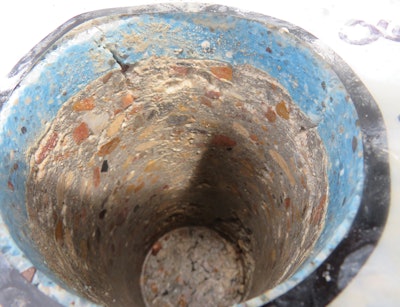
REMEDIATION
Remediating ASR issues can take several years, especially through the courts. While waiting for resolution, there are several temporary actions that can extend the service life of an ASR affected pool, such as the installation of vinyl liners or flexible membrane coatings. Some of these remedial actions may only last a year or two, and some may last five to 10 years or more. The length of useful time will vary with the advancement and speed of ASR development in the underlying shotcrete.
The resolution of many Central Texas pool cases is being decided in the courts. There have been so many cases that they’ve all been consolidated into a Multi-District Litigation (MDL). An MDL combines multiple cases to a single court to streamline complex litigation; in one instance, up to 400 parties are included. This has been a slow process that has been ongoing for several years.
PREVENTING ASR
The best way to address the prevention of ASR is education before the pool is built. Builders should know how to prevent ASR, and specify materials with recognized standards. For example, ASTM C33 requires no aggregate minerals that will react with cement alkalis to cause deleterious expansion in wet environments (like pools). Be sure the subcontractors and material suppliers are aware that this will be a wet exposure application, and you expect ASTM C33 compliance.
Other means include the use of low-alkali cement, type F fly ash, or
other known pozzolans that reduce the possibility of ASR formation. Use low water-to-cement ratios — too much water makes the matrix both weak and porous. Use water reducing admixtures (plasticizers) rather than more water for workability. Require mix tickets and check mix contents; reject the mix if it is not correct.
Use the proper amount of reinforcing steel for acceptable crack mitigation, not merely the often-cited ACI 318 provision of 0.2% for crack control. Use alkali-resistant fibers for crack control. Use at least 4000-psi shotcrete. Observe proper curing procedures and durations (and no, mere hand-sprinkling with a hose morning and evening in the Texas summer is NOT enough).
 John McIntyre, P. E., has over 46 years of diverse professional experience in structural, electrical, mechanical (HVAC and plumbing) and aquatic engineering design. He holds a B.S. in Architectural Engineering (1977) and a B.S. in Physics (1974) from UT – Austin, and is vice president of McIntyre & McIntyre, an Architectural, Engineering and Aquatics Consulting firm. John is an Advanced CBP, a Genesis instructor, and is active in PHTA, both in the central Texas Chapter and with PHTA national where he serves as the ASR Task Force Committee Chair.
John McIntyre, P. E., has over 46 years of diverse professional experience in structural, electrical, mechanical (HVAC and plumbing) and aquatic engineering design. He holds a B.S. in Architectural Engineering (1977) and a B.S. in Physics (1974) from UT – Austin, and is vice president of McIntyre & McIntyre, an Architectural, Engineering and Aquatics Consulting firm. John is an Advanced CBP, a Genesis instructor, and is active in PHTA, both in the central Texas Chapter and with PHTA national where he serves as the ASR Task Force Committee Chair.
COURT DEVELOPMENTS
Some recent developments in the MDL court proceedings may incline insurance companies to be more amenable to settlement. At least one judge in the Texas MDL has ruled that the silica exclusion used by many insurance policies is not cause to deny coverage on ASR pool cases. The exclusion was originally developed to address concrete dust pollution in New York City after the 9/11 collapse of the World Trade Center Towers, not to address silica confined inside concrete.
One thing we’ve learned from observing the Owner-Contractor-Insurance Co. negotiations is it’s best to use reasonable replacement proposals. The purpose of insurance is to replace damaged material (to current code provisions), not to arbitrarily upgrade equipment, pool/spa size, or amenities. Limit collateral work to what is actually necessary — this is not a license to upgrade your backyard (upgrades are at the owner’s own cost).
As ASR information spreads, the new instances of ASR appear to be declining, which is good news for all. Swimming pools should be a source of enjoyment, not worry.
This article first appeared in the July 2025 issue of AQUA Magazine — the top resource for retailers, builders and service pros in the pool and spa industry. Subscriptions to the print magazine are free to all industry professionals. Click here to subscribe.

























